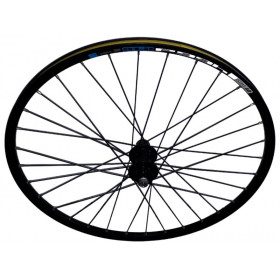-
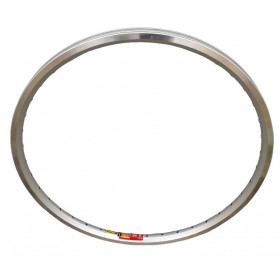 New productMavic D521 MTB rim 26 inches
New productMavic D521 MTB rim 26 inches- €29.99
-
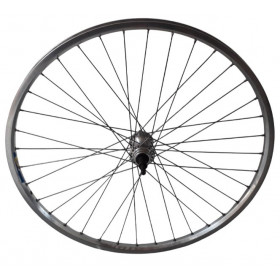 New product New26 inches rear wheel Rigida Laser 40
New product New26 inches rear wheel Rigida Laser 40- €29.99
-
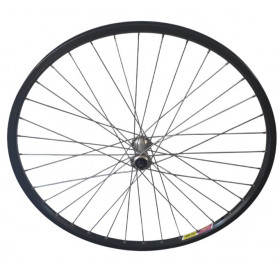 New product26 inch front wheel Rigida Laser 400
New product26 inch front wheel Rigida Laser 400- €28.99
-
 New productWTB XC25 Lite wheel 27.5 inches
New productWTB XC25 Lite wheel 27.5 inches- €69.99
-
 UsedMTB rear wheel 26 inch Fulcrum Red Metal 5
UsedMTB rear wheel 26 inch Fulcrum Red Metal 5- €18.99
-
 Mavic X321 disc 26 inch front wheel
Mavic X321 disc 26 inch front wheel- €23.99
-
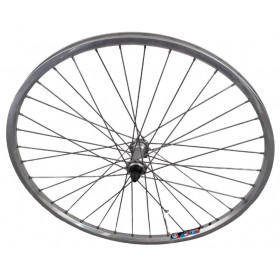 New productFront wheel 26 inches Rigida laser 40
New productFront wheel 26 inches Rigida laser 40- €34.99
-
26 inch mountain bike front wheel Mavic X139
- €39.99
-
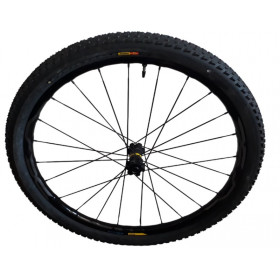 New productFront wheel Mavic E-XA Elite 27.5 inches
New productFront wheel Mavic E-XA Elite 27.5 inches- €229.99
-
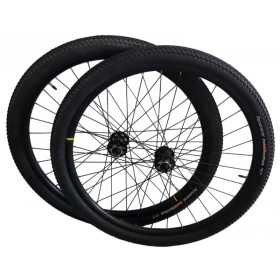 UsedWheelset Mavic XC425 29 inches
UsedWheelset Mavic XC425 29 inches- €239.99
-
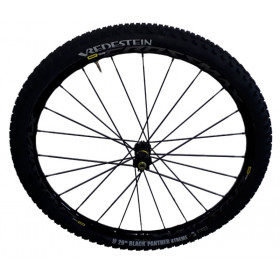 New product -20%Front wheel Mavic Cross Max Elite 29 inches
New product -20%Front wheel Mavic Cross Max Elite 29 inches- €180.79
- €225.99
-
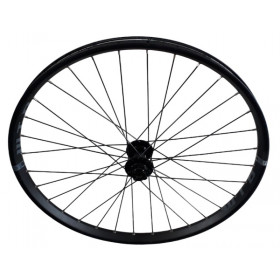 UsedFront wheel WTB ASYM I29 disc 27.5 inches
UsedFront wheel WTB ASYM I29 disc 27.5 inches- €44.99
-
 New productAlexrims XD-LITE 29 wheels for MTB
New productAlexrims XD-LITE 29 wheels for MTB- €149.99
-
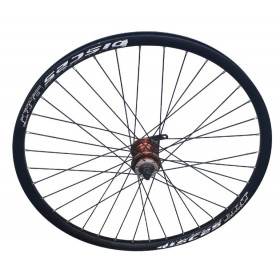 New product26 inches front wheel BRT disc 25
New product26 inches front wheel BRT disc 25- €29.99
-
 New productFront wheel 26 inches Ryde Sputnik
New productFront wheel 26 inches Ryde Sputnik- €44.99
-
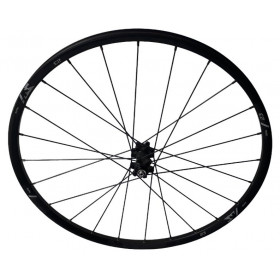 New productMTB front wheel Rocky mountain inferno 23 disc 26 inches
New productMTB front wheel Rocky mountain inferno 23 disc 26 inches- €69.99
-
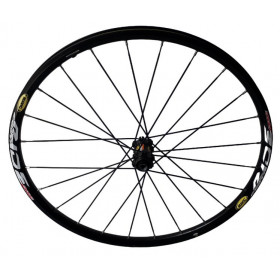 New product -45%Front wheel Mavic Crossride disc 26 inches center lock 15 mm
New product -45%Front wheel Mavic Crossride disc 26 inches center lock 15 mm- €71.49
- €129.99
-
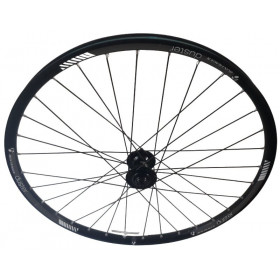 New productMTB front wheel 26 inches tubeless ready Bontrager Duster
New productMTB front wheel 26 inches tubeless ready Bontrager Duster- €99.99
-
Front wheel Mavic Crossride disc 26 inches
- €56.64
- €118.00
-
Rear wheel DT swiss 466d 27.5 inches
- €44.99
Showing 1-20 of 20 item(s)
MTB wheels: everything you need to know to choose the right ones
MTB wheels play a central role in your mountain bike’s handling, performance, and comfort. Far more than just metal circles, they directly impact traction, stability, responsiveness, and even your bike’s ability to roll over obstacles. Whether you're into smooth trails, enduro riding, or technical descents, choosing the right MTB wheels is essential. Here’s an overview of the key characteristics to help you find the wheels best suited to your riding style.
1. MTB wheel diameter: a strategic choice
The diameter of MTB wheels is a key factor that significantly affects your bike’s maneuverability, stability, and obstacle-clearing ability. While the MTB frame also plays a major role, it’s often the wheel diameter that most influences how your bike behaves on the trail. Today, three main standards coexist, each with its own advantages and limitations.
26-inch: the original standard
For decades, 26-inch wheels were the universal standard for mountain biking. Light, responsive, and highly maneuverable, these wheels were especially popular for technical descents and tight turns. However, this size has largely faded out in favor of larger diameters that offer better overall performance.
Today, 26-inch MTB wheels are mostly found on older models, kids’ bikes, or some entry-level mountain bikes. They can still be a good option for smaller riders or those looking for a highly playful bike.
27.5-inch: the versatile compromise
The 27.5-inch (also known as 650B) emerged as the ideal middle ground between the small 26" and the sometimes unwieldy 29". This diameter offers a great mix of responsiveness, agility, and better rollover capability than 26-inch wheels. It’s aimed at riders who want a dynamic feel with solid riding comfort.
You’ll often find this size on all-mountain and enduro bikes, where the balance between downhill maneuverability and uphill traction is crucial.
29-inch: the modern benchmark
29-inch MTB wheels now dominate the market, especially in disciplines like cross-country, trail, and even some enduro categories. Their larger diameter smooths out trail irregularities, improves ground grip, maintains momentum on rolling sections, and makes it easier to roll over obstacles.
Advantages of 29-inch MTB wheels:
-
Excellent directional stability at high speeds
-
Better traction due to a larger contact patch
-
Increased comfort, as they absorb shocks more effectively
-
Easier to roll over roots, rocks, and natural obstacles
Potential drawbacks:
-
Slightly less nimble in very tight corners
-
Slower acceleration compared to smaller wheels
-
Less suited to smaller riders—unless paired with a well-proportioned frame
Many experienced riders and racers choose 29-inch MTB wheels to maximize efficiency and comfort on long rides or technical trails.
How to choose the right MTB wheel diameter
| Diameter | Advantages | Disadvantages | Best For |
|---|---|---|---|
| 26 inches | Lightweight, agile | Less stable, less smooth-rolling | Smaller riders, leisure MTB, tight budgets |
| 27.5 inches | Good balance between handling and rollover | Less efficient than 29" on flat terrain | Enduro, all-mountain, versatile riders |
| 29 inches | Stability, traction, comfort | Less responsive, bulkier | XC, trail, long rides, technical terrain |
Pro tip: Match the diameter to the terrain
On technical, fast terrain like narrow singletracks or trial zones, smaller wheels offer more responsive handling.
On rolling or rough terrain, 29” MTB wheels are unbeatable for maintaining speed and control.
Wheel diameter greatly influences your riding style. Whether you opt for classic 26", versatile 27.5", or modern 29" MTB rims, the most important factor is choosing a size that suits your riding discipline, body type, and expectations in terms of performance or comfort.
1. MTB rim width and profile: striking the balance between performance and strength
Often overlooked, the MTB rim is a key component of your wheel’s overall performance. It affects not just tire choice, but also handling, impact resistance, and bike responsiveness. Whether you ride cross-country, all-mountain, or enduro, choosing the right MTB rim lets you optimize your setup for your preferred terrain.
2. Internal rim width: more than just a measurement
The internal width (measured between the inner hooks of the rim) directly shapes the MTB tire and influences its behavior. It plays a critical role in:
-
Cornering stability: a wider rim spreads the tire sidewalls, increasing ground contact and grip in turns.
-
Air volume: wider MTB rims allow for lower tire pressures, enhancing comfort and traction.
-
Anti-burping protection: a better-supported tire shape reduces the risk of burping or unseating the tire, even at low pressures on rough trails.
3. Recommended widths by discipline
| Internal Width | Recommended Use |
|---|---|
| 19–23 mm | XC, marathon, recreational MTB |
| 25–30 mm | Trail, all-mountain |
| 30–35 mm | Enduro, downhill, e-MTB |
Modern MTB rims tend toward wider profiles to accommodate wider, more aggressive tires.
4. Tubeless ready profile: ride without tubes
Most modern MTB rims are tubeless ready, meaning they’re compatible with tubeless setups—provided you add MTB airtight rim tape, a tubeless valve, and sealant.
Benefits of a tubeless setup:
-
Fewer punctures (especially pinch flats)
-
Lower pressure = better grip and comfort
-
Improved rolling efficiency (no tube friction)
-
Weight savings, especially in high-end builds
A proper MTB tubeless rim must have:
-
Specific bead hooks
-
Enhanced airtightness
-
Tight manufacturing tolerances to keep the tire secure
Materials and construction: strength or lightness ?
MTB rims are generally made from aluminum or carbon, depending on your budget, weight goals, and performance needs.
-
Aluminum: more affordable, impact-resistant, and often repairable—ideal for regular or aggressive use.
-
Carbon: lighter and stiffer, improving handling precision and acceleration. However, more expensive and sometimes less forgiving in hard impacts.
Which rim for which riding style ?
Each MTB discipline puts different demands on your wheels. Here's a quick overview of the best rim profiles by riding style:
-
Cross-country (XC): narrow rims (19–25 mm), lightweight, optimized for climbing and acceleration
-
Trail / All-mountain: mid-width rims (25–30 mm), balanced between weight and durability
-
Enduro / Downhill: wide rims (30–35 mm), reinforced for big hits and low pressures
-
Electric MTB (e-MTB): reinforced rims, often aluminum, built to withstand motor torque and extra bike weight
The MTB rim affects everything—from ride comfort to outright performance. To optimize your MTB wheels, adapt the rim width, tubeless profile, strength, and weight to your riding style.
Pro tip: A well-chosen rim paired with properly sized tires can improve grip, reduce fatigue, and boost confidence on descents.
Materials: aluminum or carbon? Which is the best choice for your MTB wheels ?
The material of your MTB wheels has a direct impact on how your bike performs—affecting weight, stiffness, comfort, and efficiency. Today, two materials dominate the MTB wheel market: aluminum and carbon. Each has its own technical characteristics, advantages, and drawbacks depending on your skill level, budget, and riding style.
Aluminum MTB wheels: durability and accessibility
Aluminum has long been the go-to material for MTB rims. It's still the most common today—and for good reason: it offers an excellent balance of strength, affordability, and ease of maintenance.
Advantages of aluminum MTB wheels:
-
Impact resistance: aluminum better absorbs direct hits, which is crucial in trail, all-mountain, or enduro riding.
-
Affordable price: aluminum wheels are significantly more budget-friendly than their carbon counterparts.
-
Repairability: a deformed aluminum rim can sometimes be straightened—something that's nearly impossible with carbon.
-
Solid weight-to-performance ratio, especially in mid- to high-end models.
Disadvantages:
-
Less lateral stiffness, which can slightly reduce precision when sprinting or pushing hard into corners.
-
Heavier than equivalent carbon wheels, which may be felt on long rides or in competitive settings.
For most riders—MTB touring, casual rides, amateur enduro, e-MTB—aluminum wheels remain the smartest and most reliable option.
Carbon MTB wheels: lightweight and high performance
Carbon has become a staple in high-end mountain bikes. MTB carbon wheels are prized for their lightness and stiffness—two key factors for riders seeking top performance.
Advantages of carbon wheels:
-
Reduced weight: lighter wheels mean lower rotational inertia, better acceleration, and more responsive handling.
-
Greater lateral stiffness: this enhances steering precision and delivers a more immediate response.
-
Excellent vibration damping, improving comfort on long XC or marathon rides.
-
Optimized design: carbon allows for more aerodynamic or reinforced rim profiles thanks to flexible shaping possibilities.
Disadvantages:
-
High price: carbon wheels are a serious investment, often aimed at enthusiasts or competitive riders.
-
Less tolerant to heavy impacts: a sharp rock or hard crash may crack a carbon rim, whereas aluminum tends to bend without breaking.
-
Limited repairability: a cracked carbon rim is usually beyond repair.
Carbon MTB wheels are best suited to experienced riders, XC racers, or passionate mountain bikers looking for the best balance of weight and performance—provided they’re willing to invest more and ride with a bit more care.
Comparison table: aluminum vs. carbon
| Feature | Aluminum | Carbon |
|---|---|---|
| Weight | Medium to light | Very light |
| Stiffness | Medium | High |
| Impact resistance | Excellent | Moderate to good |
| Price | Affordable | Expensive |
| Repairability | Good | Low |
| Performance | Good | Excellent |
Which material should you choose for your MTB wheels ?
-
For recreational or occasional use: Aluminum MTB wheels are the most sensible, budget-friendly, and worry-free option.
-
For heavy, technical riding (enduro, bike parks, e-MTB): Go for reinforced or high-end aluminum rims.
-
For racing or long-distance XC/marathon: Carbon MTB wheels provide a real gain in efficiency and comfort—if you're willing to accept the higher cost and fragility.
Pro tip: think about your riding style first
Don’t buy carbon MTB wheels just for their image. A solid pair of aluminum wheels that match your terrain and riding habits will perform better than an underused carbon set.
The right choice is the one that lets you ride with confidence, enjoyment, and without unnecessary compromises.
The hub and axles: the mechanical heart of your MTB wheel
Often overshadowed by rim size or diameter, the MTB wheel hub plays a central role in the overall performance of your bike. It connects the wheel to the frame, transmits pedaling power, contributes to braking (via disc rotors), and ensures smooth rotation. The axle, in turn, determines the stiffness and precision of the entire system.
Understanding their characteristics helps you choose the right MTB wheels based on your riding style, terrain, and performance goals.
MTB wheel hub: a key technical component
The hub consists of a central body around which the bearings rotate, flanges for the spokes, and the freehub body (at the rear).
Bearings: smoothness and reliability
Two main types of bearings are used in MTB hubs:
-
Sealed cartridge bearings: pre-assembled and maintenance-free. Common on mid- to high-end MTB wheels. Highly effective at keeping out mud and water, offering great longevity for off-road use.
-
Cup-and-cone ball bearings: more common in entry- to mid-range models. Require regular maintenance (cleaning, adjusting play, greasing), but are often more economical over time.
A good-quality, well-maintained hub improves wheel smoothness, reduces friction, and prevents unwanted play.
Freehub body and engagement system: responsiveness and efficiency
On the rear wheel, the freehub body holds the MTB cassette. It houses the engagement mechanism (usually pawls or ratchets), which transmits pedaling force to the wheel.
Key metric: engagement angle
This is the number of degrees the cranks must rotate before the hub engages.
-
Lower engagement angles (e.g., 3° to 6°) mean faster response when accelerating.
-
Higher angles (e.g., 15° or 20°) create more lag or "dead zone" before the wheel reacts.
A fast engagement system is especially valuable for technical riding, short bursts, and climbing over obstacles—when every pedal stroke counts.
Axle type: stiffness and compatibility
The axle type affects lateral stiffness, steering precision, and compatibility with your frame and the MTB fork.
QR (Quick Release)
-
Traditional 9 mm quick-release skewer.
-
Easy to handle, but less stiff and secure.
-
Becoming rare on modern MTBs.
Thru-axle
-
Threaded axle that passes through the fork or frame and screws directly into place.
-
Provides much greater stiffness, precision, and reliability—especially with disc brakes.
Common standards:
-
Front: 15 x 100 mm or 15 x 110 mm Boost
-
Rear: 12 x 142 mm, 12 x 148 mm Boost, or 12 x 157 mm Super Boost
Boost wheels (wider hub spacing) offer a wider spoke angle, which improves lateral stiffness and wheel strength without significantly increasing weight.
Quick reference: choosing an MTB hub
| Feature | Why It Matters |
|---|---|
| Bearing quality | Affects smooth rotation, durability, and wear resistance. |
| Engagement angle | Influences how responsive the wheel is during accelerations or technical climbs. |
| Axle type | Determines overall stiffness, safety, and frame/fork compatibility. |
| Cassette/disc compatibility | Shimano, SRAM XD, or Microspline? 6-bolt or Center Lock rotors? Must match your drivetrain and brakes. |
A good hub makes all the difference
The MTB hub isn’t just a simple axle—it’s a critical component of your bike’s performance and reliability. Choosing the right hub—and the corresponding axle—ensures better power transfer, smoother rotation, improved stiffness, and less maintenance.
Whether you ride cross-country, all-mountain, enduro, or e-MTB, investing in a quality hub is a smart, long-term decision.
MTB wheel weight and stiffness: the balance between agility and strength
When it comes to MTB wheels, two factors directly affect how your bike behaves on the trails: weight and stiffness. These two parameters are closely tied to performance, riding feel, and the bike’s ability to handle rough terrain. Striking the right balance means optimizing both enjoyment and efficiency across all types of terrain.
MTB wheel weight: lighter means more responsive
The weight of your MTB wheels has a significant impact on acceleration, responsiveness, and inertia control. Because wheels are rotating masses, every gram saved makes a noticeable difference with each pedal stroke.
Benefits of lightweight wheels:
-
Faster acceleration: less energy needed to get back up to speed after braking or cornering.
-
Easier climbing: especially noticeable on long or technical ascents.
-
More dynamic feel: the bike feels livelier and more agile.
-
Reduced fatigue on long rides.
That’s why 29-inch XC MTB wheels are often impressively light, sometimes weighing under 1.5 kg per pair in high-end carbon versions.
Tip: Focus on reducing the weight of the rim (the outermost part of the wheel), as it brings the greatest gain in reducing inertia.
Stiffness: for control, power transfer, and precision
Stiffness refers to a wheel's ability to resist deformation (laterally or vertically) under stress—whether it's braking, cornering, sprinting, or landing jumps. It depends on several factors:
-
Rim cross-section and profile
-
Rim material (carbon is stiffer than aluminum)
-
Spoke pattern, number, and tension
-
Axle width (e.g., Boost standard)
A stiff wheel offers:
-
Precise handling: holds its line better during aggressive descents or in tight corners.
-
Direct power transfer: less energy lost during pedaling.
-
Increased stability at high speeds.
But beware: Too much stiffness can reduce comfort and may cause premature wear if the wheel takes frequent hard hits.
Weight vs. stiffness by MTB discipline
| Riding Style | Target Weight | Required Stiffness | Recommended MTB Wheel Type |
|---|---|---|---|
| Cross-country (XC) | Very light (1.3–1.6 kg) | Medium to high | 29" carbon or high-end alloy wheels |
| Trail / All-mountain | Moderate (1.7–2.0 kg) | Balanced | Wide and stiff rims, alloy or carbon |
| Enduro | Robust (2.0–2.2 kg) | High | Reinforced wheels, often alloy with solid profiles |
| Downhill (DH) | Heavier (2.2–2.5 kg) | Very high | DH-specific wheels, usually thick aluminum |
| E-MTB (Electric MTB) | Reinforced (>2.3 kg) | Very high | Heavy-duty wheels, wide and rigid rims |
In enduro or downhill, it's often better to accept a few hundred extra grams in exchange for more impact-resistant rims and spoke setups that can absorb shocks without deforming.
29-Inch MTB wheels: the ideal weight-stiffness balance ?
29" MTB wheels have become the go-to standard in XC, trail, and even enduro. Thanks to their larger diameter, they offer better rollover capability and increased natural inertia, making them more efficient over rough ground.
However, the larger size comes with its own challenges:
-
Bigger rims need to stay light to preserve quick acceleration.
-
Longer wheels are more prone to flex, making Boost axles and stiff profiles essential.
The best 29-inch MTB wheels today manage to combine light weight, durability, and stiffness—especially with well-designed carbon construction.
Finding the right balance
Choosing the right MTB wheelset always comes down to balancing weight and stiffness:
-
The more aggressive your riding style, the more durability and strength matter.
-
The more you seek speed and efficiency, the more lightweight design takes priority.
The right wheel choice is the one that fits your terrain, your riding style, and your goals.
Wheel setup and compatibility: a technical choice above all
Buying an MTB wheel isn’t just about choosing a diameter or material. Mounting standards and compatibility are key to ensuring a safe, functional, and high-performance assembly between your wheels, frame, drivetrain, and braking system. A mismatch in standards can make your wheel unusable on your bike.
Here are the essential compatibility checks to make before buying or replacing a mountain bike wheel.
Freehub body type: Shimano, SRAM XD, or Microspline ?
The freehub body is the part where the cassette attaches. It must match your drivetrain type.
The three main standards are:
-
Shimano HG (Hyperglide): the most common, compatible with most 8- to 11-speed Shimano cassettes and some SRAM models.
-
SRAM XD: specific to SRAM 11- and 12-speed cassettes with a 10-tooth smallest cog.
-
Shimano Microspline: for modern Shimano 12-speed drivetrains (SLX, XT, XTR ranges).
A 29" or 27.5" MTB wheel won’t automatically be compatible with your drivetrain — you need the correct freehub interface or an interchangeable freehub body (available on high-end hubs like DT Swiss or Hope).
Disc mount system: 6-bolt or center lock
Modern MTB wheels are all designed for disc brakes, but two disc mount systems exist — and they’re not interchangeable without adapters:
-
6-bolt (ISO): the disc is mounted using six bolts. This is a widely used, universal standard — especially common in enduro, DH, and general MTB use.
-
Center Lock (Shimano): uses a splined central lockring. Quicker to install and often stiffer, but requires specific tools.
Make sure your rotors and wheels match, or plan to use a Center Lock to 6-bolt adapter if needed.
Hub width: boost, non-boost, superBoost…
Hub width is a crucial factor. It affects:
-
Lateral stiffness
-
Tire clearance
-
Compatibility with your frame and fork
Here are the main standards:
| Standard | Front Hub | Rear Hub | Notes |
|---|---|---|---|
| Non-Boost (classic) | 100 mm x 15 mm | 142 mm x 12 mm | Older standard, less stiff |
| Boost | 110 mm x 15 mm | 148 mm x 12 mm | Modern MTB standard, now widely adopted |
| SuperBoost | — | 157 mm x 12 mm | Extra stiffness, often used in e-MTB and DH |
| Quick Release (QR) | 100 mm x 9 mm | 135 mm x 9 mm | Legacy standard, still found on entry-level bikes |
Boost wheels are now the most common, especially on 29-inch MTB wheels, offering better stability, more favorable spoke angles, and compatibility with wide tires.
Important: A frame built for Boost cannot accept a non-Boost wheel without specific adapters — and these are not recommended for aggressive riding.
Other compatibility factors to watch
-
Tire size compatibility: Your MTB rim must match the tire width you plan to use (e.g., 25 mm internal width for a 2.4" tire).
-
Tubeless compatibility: Most modern MTB wheels are tubeless-ready, but you must ensure they include a sealed rim tape and a tubeless valve.
-
Spoke count: Some high-end wheels use 28 spokes; others use 32 (more common and generally stronger).
MTB wheel compatibility checklist
| Component | What to Check | Why It Matters |
|---|---|---|
| Freehub body | Shimano HG, XD, Microspline | Cassette compatibility |
| Disc mount | 6-bolt or Center Lock | Rotor compatibility |
| Hub width | Boost, Non-Boost, SuperBoost | Frame and fork compatibility |
| Wheel size | 26, 27.5, 29 inches | Matches bike geometry |
| Rim width | e.g., 23 mm, 25 mm, 30 mm | Tire compatibility |
| Tubeless-ready | Yes/No | For running tubeless setups |
A high-performance wheel is worthless without compatibility
Even the best MTB wheel won’t benefit your ride if it’s not compatible with your current setup. Before investing, it’s essential to check your bike’s standards. When in doubt, consult your frame’s technical specifications or ask a professional.
Compatibility = safety + performance + peace of mind.
Conclusion: choosing the right MTB wheels means more fun and better performance
Whether you're looking to boost your mountain bike’s performance or replace a damaged wheel, every detail matters—diameter, materials, rim, hub, weight... Investing in 29-inch MTB wheels or any other setup tailored to your riding style means gaining comfort, safety, and efficiency on the trails.
Take the time to assess your needs, and don’t hesitate to ask for expert advice. The right pair of MTB wheels can truly transform your riding experience.



